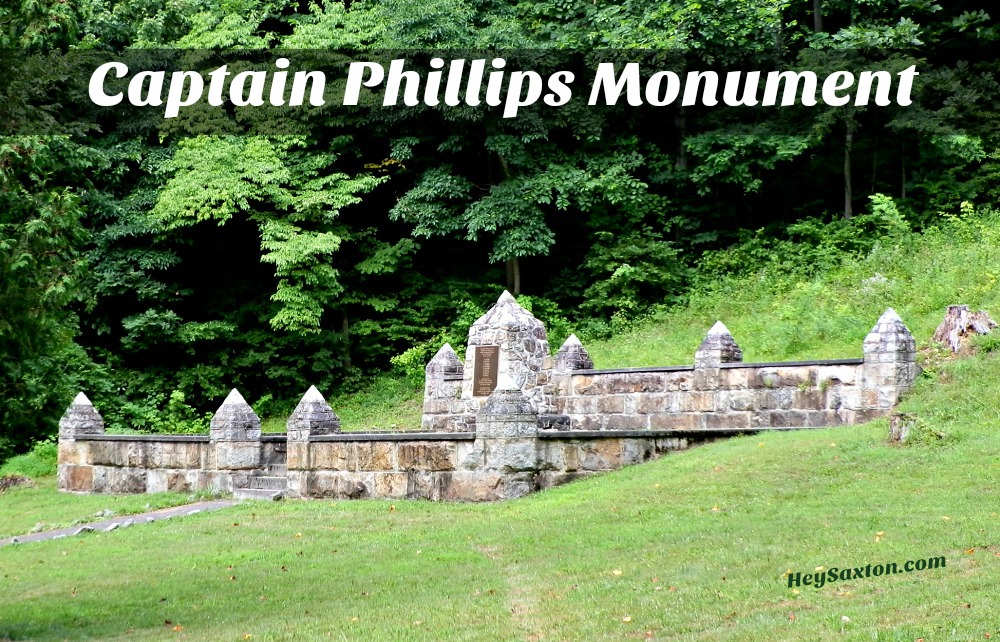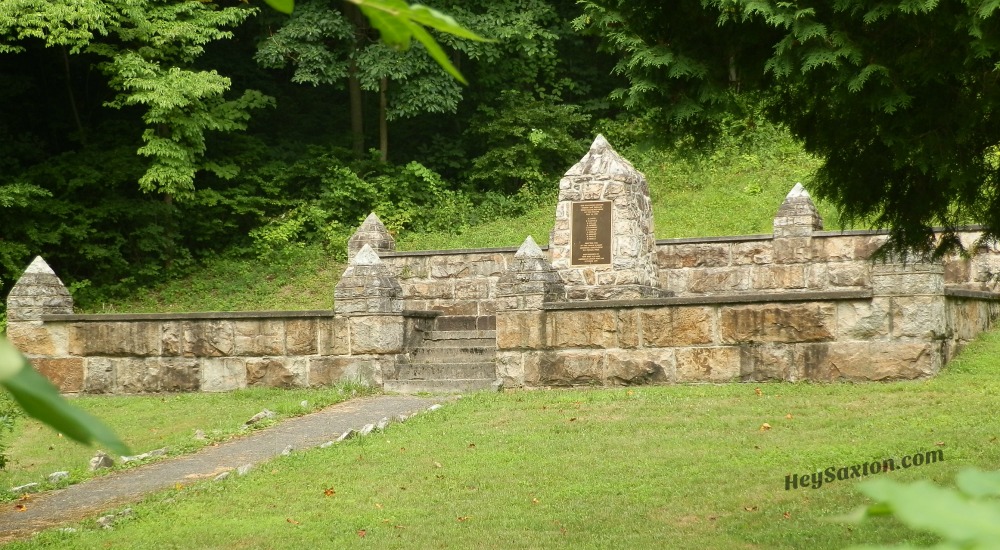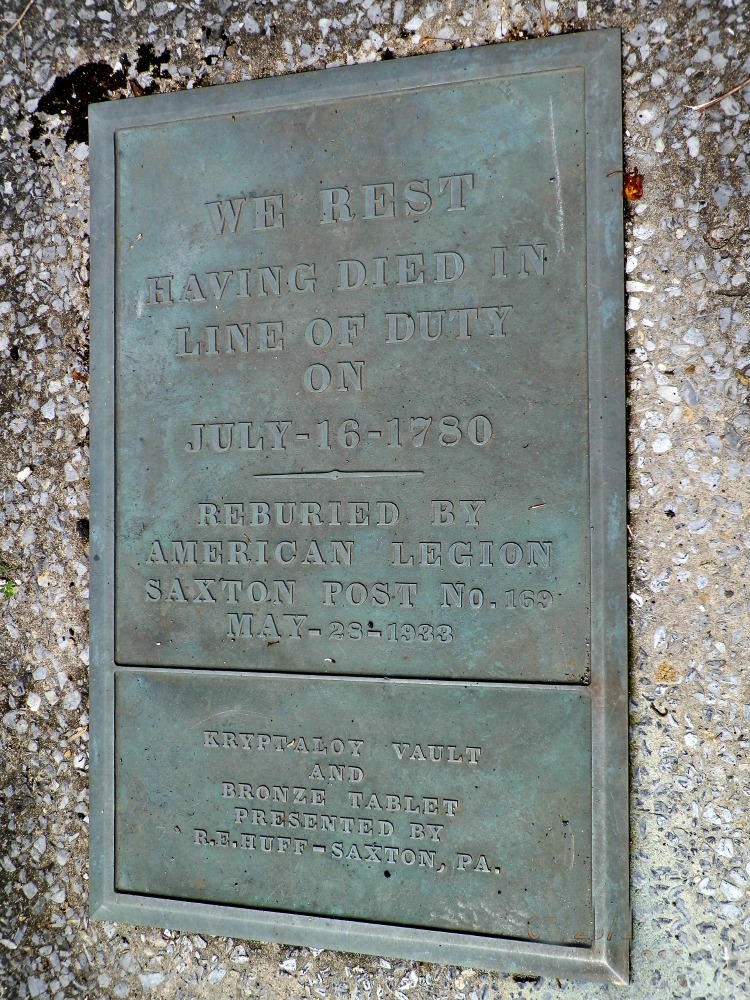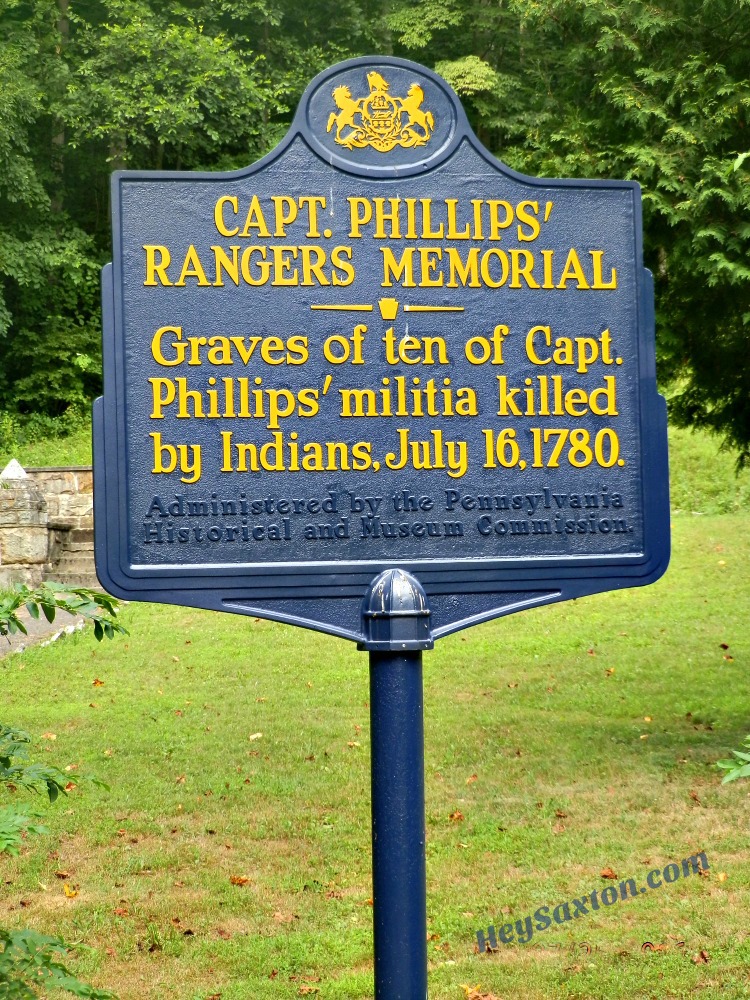Captain Phillips Monument
It was dangerous to live in the area locally known as Woodcock Valley during the summer of 1780. Marauding bands of Seneca Indians forced most of the settlers to flee to the safety of a string of forts dotting the area.
The report of a large party of hostiles spurred Colonel John Piper to send Captain William Phillips, Phillips’ son Elijah, and ten other rangers to warn settlers and assist in their evacuation to the safety of the nearby forts. On July 15 they crossed Tussey Mountain and came to the home of Frederick Heater (sic). Finding the place empty and encountering heavy rain, the rangers occupied the blockhouse-style dwelling for the night.
Surrounded
The next morning they were stunned to find the place surrounded by 50 – 60 Senecas. A firefight ensued with the rangers holding on throughout the morning. By afternoon, the attackers managed to set the home on fire forcing the rangers to capitulate.
Rumors persist that the rangers were promised that their lives would be spared and they would be treated as prisoners of war. Captain Phillips and Elijah were bound and marched northward from the scene. They eventually were taken to Detroit where they spent the rest of the war.
The remaining Rangers were also bound but marched southward. About 1/2 mile from the house, they were tied to trees and executed. Two days later a search party sent by Piper found them still tied to the trees, pierced multiple times by arrows, disemboweled and scalped. They were buried in a shallow grave.
For many decades only the memory of the massacre and the general location of where it occurred persisted.
Monument
In 1926 an impressive monument, still standing today, was constructed in the general location of where the massacre was thought to have occurred.
It was dedicated July 16, 1926, 146 years to the day of the massacre. On January 25, 1933 a WPA (Work Projects Administration) crew was at the site making improvements in preparation for Memorial Day services later that year.
While clearing and grading for construction of a wall, a skull was unearthed. Remarkably it was only a few feet from the monument. The remains of the Rangers had finally been found. They were removed and four months later, Memorial Day 1933, they were reinterred close to the existing memorial.
It is unclear how many of the Rangers were actually in the grave. Some reports listed seven as it is thought that several may have been killed during the siege at the Heater home and their bodies consumed by the ensuing fire.
Heroes Listed on Memorial
The Memorial now has the names of those who were killed in the line of duty protecting the settlers of Woodcock and adjacent valleys. Those named are Phillip Skelly, Hugh Skelly, Philip Sanders, Thomas Sanders, Richard Shirley, M. Davis, Thomas Gaitrell, Daniel Kelly, G. Morris, A. Shelly.
Visit the Site
Today the site is easily accessible from PA Route 26 (Raystown Road) approximately 4 miles north of Saxton. Look for the cut-stone markers along the highway. A drive of about 1/2 mile leads you to the monument.
The Saxton VFW and American Legion Posts conduct annual Memorial Day services at the monument and the site is maintained by the veteran’s organizations, Boy Scouts, and the Pennsylvania Historical and Museum Commission.
A more thorough account of the events leading up to and following the incident of July 16, 1780 can be found in the book Saxton: The History of the Most Interesting Town in Pennsylvania written in 2004 by the late Jon Baughman.




